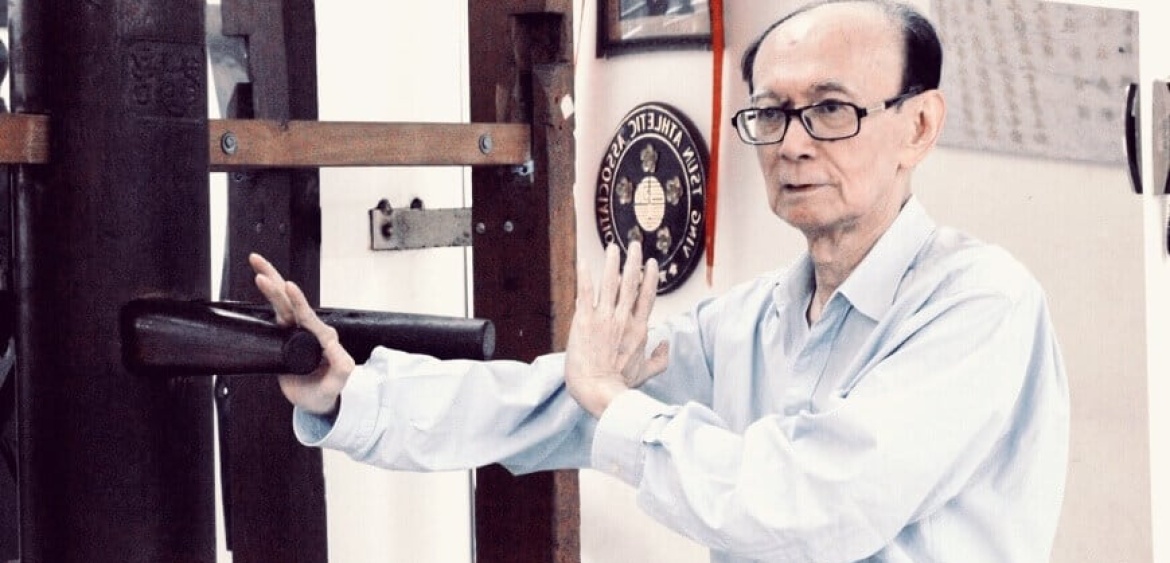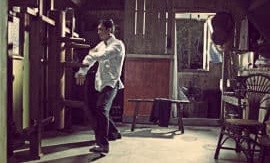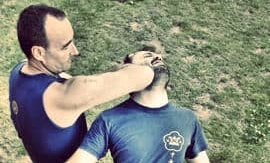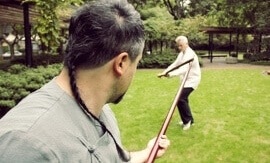
SIFU ROLAND TONG IS A LIVING TREASURE TROVE OF KNOWLEDGE ON THE LATE GRANDMASTER IP MAN. HAVING STARTED WING CHUN OVER 60 YEARS AGO IN 1954, SIFU TONG IS ONE OF THE LAST REMAINING STUDENTS OF IP MAN. HE WAS A CLOSE FRIEND TO THE LATE GRANDMASTER AND TO SIFU WONG SHUN LEUNG.
Although 79 this year, he is still actively teaching at the Ving Tsun Athletic Association in Hong Kong, continuing to spread the tradition of Ip Man Wing Chun through his passion and deep knowledge.
What kind of person was Grandmaster Ip Man, and how was he as a teacher?
Against most people’s beliefs, Sifu wasn’t a traditional teacher. He would go with the flow and teach every student according to his own understanding. He was also easy to talk to, and he got along with and talked to everybody. However, it’s true that he didn’t teach children or foreigners.
Some people say it’s because Asian and Westerners have different body types. Since Westerners tend to be bigger and stronger, they would have too much of an advantage if they also learned Gung Fu. Ip Man Sifu was a kind and good-hearted person but taught following his own plan. Whatever he wanted to teach, he taught. And if he didn’t like you, he didn’t teach you.
Ip Man’s best trait was his footwork and kicks. It was like he had no shadow. He could kick from any position. Alongside the Baat Jaam Do, I believe those to be his best skills. Many believe Ip Man also taught Neigong (“Internal Work”), but that is not the case. He didn’t believe in it.
Officially, we were Sifu and student. However, we were more like father and son. I was with him when I started Wing Chun in 1954 until the day he died, almost 20 years later.
Can you tell us about Ip Man’s relationship with Bruce Lee?
Back then, I lived in Tsim Sha Tsui. Ip Man Sifu would come to my house to teach me, and Bruce Lee came with him often. Bruce Lee wasn’t good at Wing Chun back then. As many people know, he learned what he knew of Wing Chun from Wong Shun Leung. They also became very good friends.
Back then, Bruce Lee, Wong Shun Leung and William Cheung were always training together and enjoying the old Hong Kong lifestyle. The funny thing I remember is that Bruce Lee couldn’t stay still for a moment. He learned little Wing Chun and, later in life, created his own style. In Jeet Kune Do, he was number one. But in Wing Chun, he was definitely far from it.
People also believe him to be a fighter. He fought on the rooftop of Chung King Mansions (a famous building in Tsim Sha Tsui), but he was losing. Luckily, he had Wong Shun Leung at his side, and he eventually won.
Can you tell us about your friendship with Wong Shun Leung?
Wong Shun Leung was a great guy. I met him in 1954 when I started practising. He was two years older than me and started learning before me; if he were still alive, he would be 82. Because Wong Shun Leung is described as a good fighter, many people might think he was a very proud person or unkind, but that’s not true. Everyone who knew him would tell you he was very nice and open.
He was also very brave. We went to the New Territories together, and there were many wild dogs. He would go towards the dogs, even though nobody else dared. He was really into dogfighting. Someone would call and tell him there was a dogfight going on, and they would all go to watch together: Wong Shun Leung, Ip Man and William Cheung.
Back in the day, how was it different to learn Wing Chun?
It was very different. Nowadays, people want to learn quickly. However, in the old days, learning took a long time. Traditionally, Siu Nim Tau was taught for at least three months before you could proceed to Chi Sau or more advanced skills. People who want to learn this way will always have a lack of understanding of the core concepts because not only your body but also your mind needs time to become acquainted with the style.
What do the different forms in Wing Chun mean to you? What is each for?
The Siu Nim Tau is the mother form, the ABC. It gives the practitioner all the basic knowledge while training Gong Lik, the main source of power in Wing Chun. After you learn it, everything can be understood: Chi Sau, Cham Kiu, Biu Ji, Wooden Dummy; they all come from it. The Cham Kiu form develops a lot the positioning and the stance. It’s for balance while moving around.
I disagree with some people, who say Biu Ji is only about recovery. When you fight, you don’t have to think how to react or recover. It will come naturally. Everything in it, every movement, is inch power. It’s one motion. It’s always best to finish a fight in one hit—that’s what Wing Chun is to me.
There are many stories about Ip Man teaching the Butterfly Knives using chopsticks during Yum Cha (Cantonese brunch). Is that true?
Yes, absolutely. Ip Man Sifu would even use his fingers. Using the Baat Jaam Do is not like using regular knives. Many people just hold the knives while continuing to do their regular forms, but you can’t use them like that. Using the knives is like adding another joint onto your arm, so the knife becomes your hand. Then, your hand become the forearm, and your forearm becomes your upper arm. Because of this, the strategy changes.
Many people, nowadays, also don’t know how the Baat Jaam Do are supposed to look. There are so many shapes available that go against the principles of Baat Jaam Do training.
For training, Ip Man Sifu used wooden knives that were longer than the one we see nowadays, and the tip was narrower. This was the original shape Sifu used. The real knives must be narrower and sharper at the top because they are used for stabbing. They also have to be thicker and heavier. Nowadays, the knives are too light and wide at the tip; they are used more for chopping, not for the original purpose of stabbing.
Many say Ip Man never taught the Butterfly Knives while he was in Foshan. Is that true?
That’s true. During his time in Foshan, Sifu only seriously taught two people, and he didn’t finish teaching them the whole system. There’s actually no standard form, and many people have only partial knowledge of it because Ip Man mostly showed them separate movements. Only very few people were ever taught the entire set.
Many people nowadays are concerned about the future of Gung Fu, as there are few youngsters interested in it, especially in Hong Kong. Are you concerned about this?
No, I’m not concerned. Gung Fu is a deep Chinese tradition and will survive, and good Gung Fu can still be inherited and passed to future generations. That is why, at almost 80, I’m still teaching.



















